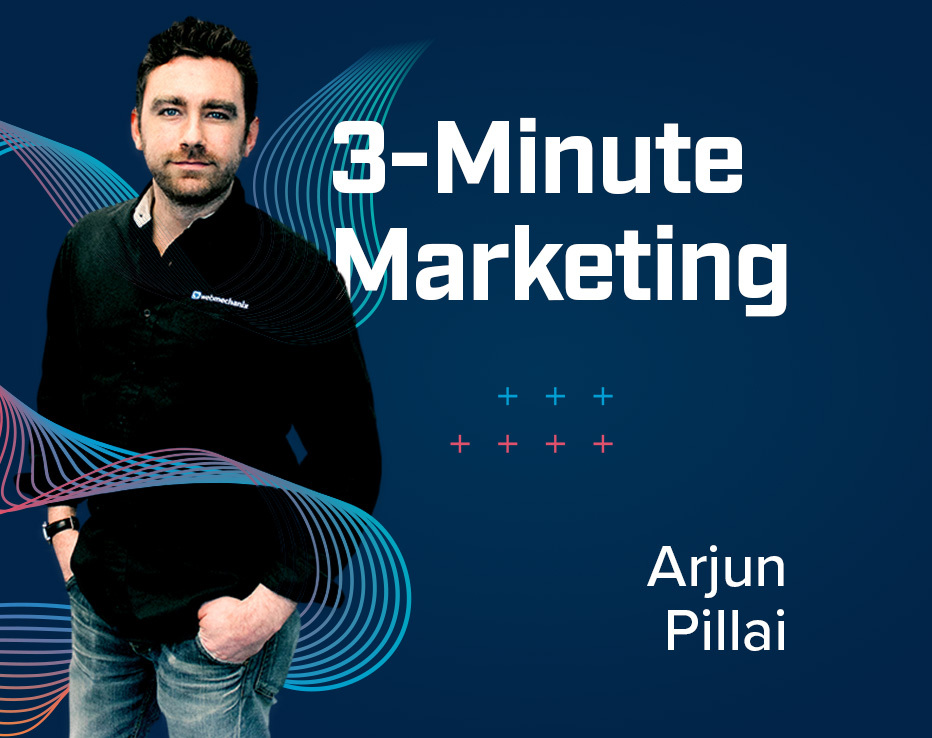
How to improve your B2B branding to win you more business
We all know branding is important. But why?
A strong brand can make your company stand out in the marketplace, positioning you as an irreplaceable partner to clients and prospects.
When it comes to B2B software marketing, the competition is fierce. New startups are popping up each day fighting for market share that strong brands work to dominate and retain. But B2B branding strategies can help you stand out from the pack, win over and keep loyal consumers, and justify higher pricing.
Consumers love and trust brands; they believe in the inherent superiority of the experience so much, that even in a negative economy 60% are often or always willing to pay more for it. –Purely Branded
What is a brand?
A brand is the identity of an organization. We create brands to make our companies relatable and to ensure our message aligns with the wants, needs, and values of clients.
And one of the most important things to remember is your brand is not what you say it is; it’s what your employees, clients, competitors, and prospects say you are. Think about it, if you surveyed these people right now, would their views be what you see (and want them to see) in your brand?
Knowing what your company offers, values, and reflects via marketing, messaging, and human engagement is important to the brand experience, helping you win business and retain clients. So, where do you start?
Know your audience and value proposition
If you don’t have a clear, specific understanding of your value proposition and your audience, it’s hard to connect the dots to create a solid SaaS marketing strategy.
There are two concepts you need to master when it comes to both traditional and digital marketing:
- Understand your audience.
Define your buyer persona. This includes understanding:
- Job role
- Industry
- Organization size
- Demographics
- Pain points
- Motivators
- Goals
- Challenges
- Responsibilities
- Success measures
- Information sources
- Preferred social platforms
- Understand your value proposition.
- What solution is your software going to provide?
- How does it meet your customers’ problems?
- How is your solution different from your competitors’?
If you don’t know these answers, it’s hard to lead your marketing team to success. A marketing plan without a defined audience or value prop is just a shot in the dark.
Where to start with your B2B branding strategy
“You now have to decide what ‘image’ you want for your brand. Image means personality. Products, like people, have personalities, and they can make or break them in the marketplace.” -David Ogilvy
To establish a consistent brand and value prop, set aside time upfront to define these using the help of some B2B branding survey tools.
Survey employees, customers, executives, and followers to collect information on how they perceive your company’s positioning.
You can use the following tools to survey users through email, social media, or your website:
Know when to ask for help
If there’s a long road ahead for your brand, consult a B2B branding agency.
As an agency, we go through this regularly with organizations as the marketplace and consumers’ demands change. One of our clients is going through this process now. There are a lot of undefined parts in the organization.
If you ask employees about what the company represents, they have wildly differing answers.
They’re new to a digital marketing approach and their sales come from traditional sources. Their current sales pipeline comes from government contracts, request for proposals (RFPs), word of mouth, and vendor connections.
It’s hard to generate leads through digital with vague branding and an undefined audience. You can influence prospects higher on the B2B software marketing funnel to consider you, but it won’t lead to or prove return on investment. You end up shooting in the dark.
A branding firm was brought in. They interviewed C-levels first, surveyed hundreds of employees, and then current customers.
The response we’ve seen from everyone involved so far is outstanding. It’s totally redefined who they are and has already brought the team a little closer together. A lot of value will come from this and lead to greater brand consistency across the company and a tighter-knit message, mission, and aligned sense of value and purpose.
If you don’t know your messaging, it’s hard to not only make a splash in your industry, but in your organization.
Where to start with B2B brand awareness
If you’re having trouble defining your audience and value proposition, here are some tips…
Ask yourself these questions:
- What’s our mission?
- What defines us as an organization?
- How and why is our brand relatable?
- What makes us different from the competition?
Once you the answers to these questions, make them known. Make sure employees, and your online and offline presence are aligned with the brand — on your website, marketing collateral, emails, ads, trade show graphics, mailers — and so on.
How to keep your branding consistent and clear
Everything changes quickly online. Thus, when it comes to branding, we have a few tips:
- Revisit your branding every five years (at a minimum).
- Have one voice that shines through the organization. Consider a gatekeeper — someone in charge of all collateral and messaging.
- Make sure value props and differentiators are understood throughout the company.
- Make sure there’s alignment with online and offline branding.
Most importantly, have an aligned B2B sales and marketing strategy.
Getting the sales team involved
Make sure sales and marketing teams talk with each other. Have both teams sit down together and figure out the best converting buyer archetypes. Let the sales team talk about the leads that convert best, what topics they’re interested in, and what makes them want to buy.
Work together to evaluate the fit and buyer intent of qualified leads. Even if leads are a good fit, they may not have the intent to be a sales-ready lead. What do we need to do to nurture those leads?
Define the user journey. If you have that conversation, you’ll have the backbone of your marketing strategy.
I’ve worked with organizations where sales and marketing didn’t talk at all. How does marketing know if what they’re doing is working if there’s no insight into the sales pipeline?
When we start new engagements, one of the biggest initiatives is to get insight from the sales team. To market a product, service, or brand well, you need to identify what’s working already. That’s where sales and marketing can intersect to create a beautiful customer journey from awareness to deals closed.
Get alignment between your marketing messages and what sales reps hear. These questions can help you do that:
- Who are our buyers?
- What’s the joint goal?
- What’s the sales timeline?
- What does success look like?
- What are our individual goals?
- What are our expectations of each other?
- How will we communicate throughout this?
Communication alone is not enough. Make sure everything is easy for the sales team. Get their attention and help them prioritize.
If you don’t do this, you will:
- Not know if the leads you deliver are good quality or not.
- Be unaware of the effectiveness of targeting, messaging, or the nurture process.
- Feel like you’re throwing spaghetti on the wall with your marketing, not knowing what sticks.
Where to start
Creating and maintaining a strong B2B software branding and marketing strategy is a lot of work. But the impact you can make with stronger brand recognition, relatable messaging, and hyper-targeted marketing placements can be worth the investment of time and resources. It all starts with a little direction and determination. What new business will your brand help you win this year and beyond?
Grab a free gift: “B2B Facebook marketing strategies that work” E-Book.
Read about the top 11 B2B digital marketing tools
View all posts filed under “Content Marketing.”
Most newsletters suck...
So while we technically have to call this a daily newsletter so people know what it is, it's anything but.
You won't find any 'industry standards' or 'guru best practices' here - only the real stuff that actually moves the needle.






